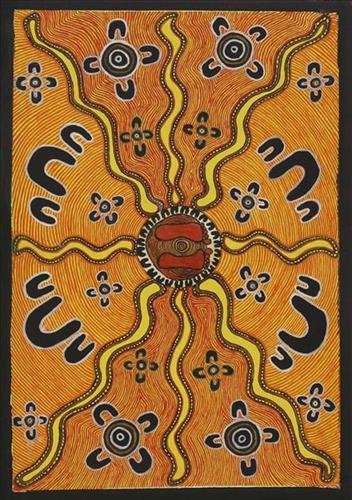111582319912
Wiliny (wind)
The traditional lands of the Martu people encompass the Great Sandy Desert and Rudall River regions of Western Australia, an enormous tract dominated by distinctive red tali, or tuwa (sandhills). These sandhills present an unforgiving landscape; sparse vegetation covers a seemingly never-ending expanse of dunes, and yet these lands and the location of resources within them was known intimately by its pujiman (traditional, desert dwelling) inhabitants. At this time, Martu traversed very large distances annually in small family groups, moving from water source to water source through the harsh desert landscape with incredible stamina and resourcefulness. Travel was often undertaken at night, and when travelling during the day, Martu wore yakipiri (woven bark sandals) to protect their feet from the hot desert sand. “The wiliny (wind) comes and blows in all directions, it clears the spinifex” – Ned Booth Ned’s work celebrates the aesthetic of Wiliny (wind) and can be understood to create change in nguraa (country). Ned’s work highlights the power of wiliny (wind) – how vital it can be to country and spinifex, particularly when spinifex and other plant species have become old growth and pose a risk of destructive bushfires.



